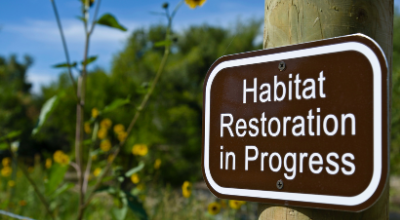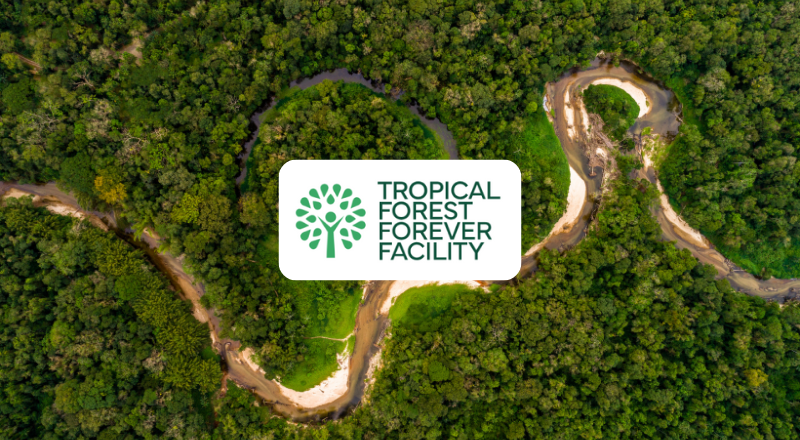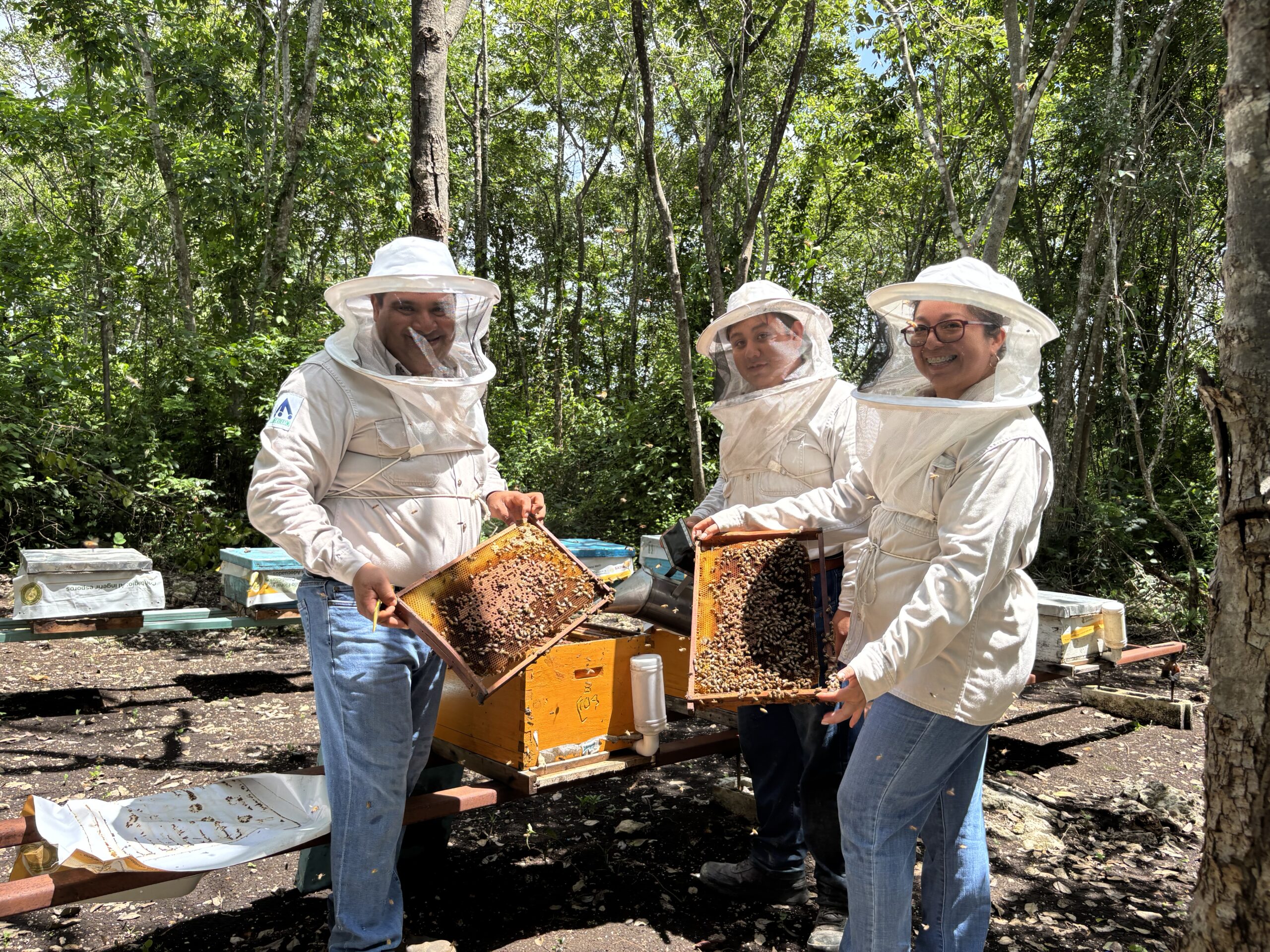
This summer, we visited the beekeepers who place their apiaries inside our restored forest areas in Yucatán, Mexico. Talking to them was unexpectedly energizing. Their knowledge, humor, and genuine love for the land made the whole visit feel alive. Here are some highlights from that day.
When we reached the apiary, it felt like entering a place the bees had completely taken over. The air was dense with movement and under the shade of young trees it was difficult to imagine that all of this used to be open, exposed pasture before Plant-for-the-Planet began its work there.
“Before, it was just grass and cows,” the beekeepers said. “Only grass. Nothing more.”
Now, this land is slowly becoming something else again: a place where trees, flowers, people, and bees coexist and depend on one another.
How a Loss Became an Unexpected Beginning

Paola, the beekeeper, grew up in Campeche, in the region where we do our restoration work.
“My father passed away when I was 17,” she said. “He left the hives, but he never taught me anything about them.”
She and her mother started visiting the hives simply because someone had to. A local farmer showed her the basics; that single gesture set the direction of her life. She later studied veterinary medicine, and she has now been a beekeeper for 25 years.
Paola’s partner Chris is from Tlaxcala, Mexico. He grew up around bees. His grandparents had them, his uncle had the and when she invited him to Campeche, he came. He stayed, officially “because of the bees,” but it’s clear the shared work and the shared life kept him there too.
Together, they run their apiaries as a team.
A Land That Finally Gets to Recover
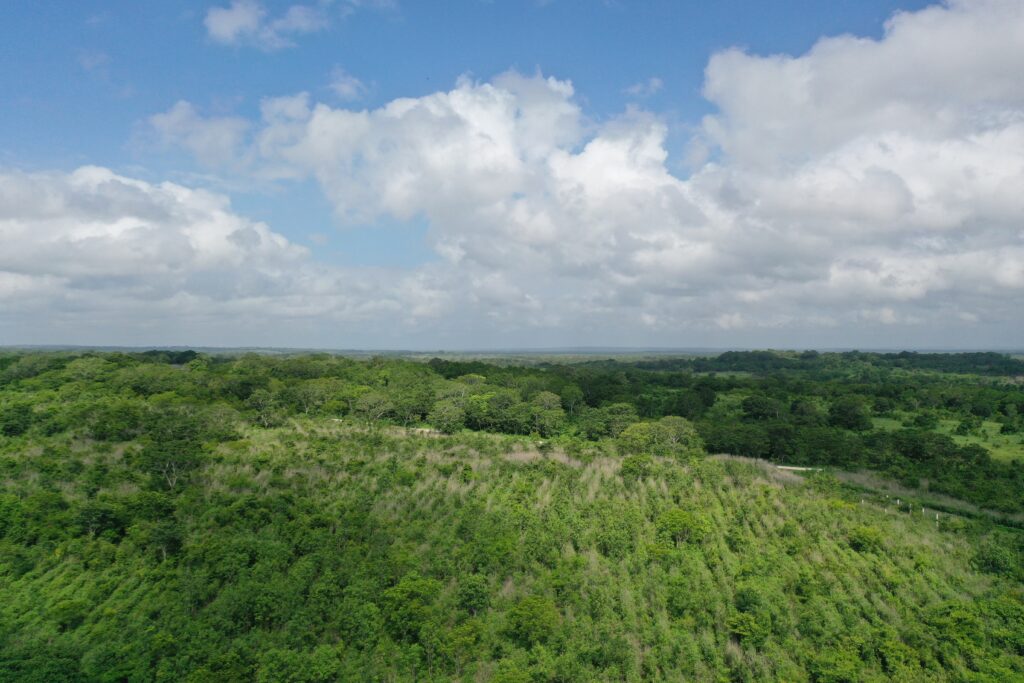
We walked with them between young trees and shrubs that weren’t here a few years ago. Birds were active, and native plants were reclaiming the ground.
“This used to be a ranch,” they repeated. “Just pasture. And in pasture, bees have nothing.”
Native species like tajonal– one of the most important plants for honey- were routinely sprayed or cut. Once restoration began and the clearing stopped, tajonal returned quickly.
“Once they stopped fumigating, tajonal came back,” they said. “And with more flowers, the bees worked more.”
What they describe is something we’ve confirmed consistently at our restoration sites in Constitución. Bees directly support forest recovery. When they pollinate native species, those plants outgrow the invasive pasture grasses that otherwise smother young tree saplings and create fire risk during the dry season. More native cover means:
- fewer grasses,
- cooler ground temperatures,
- less fuel for fires, and
- higher survival of newly planted trees.
This is one of the reasons we partner with this beekeeping couple and allow their apiaries on our land. Their bees help our forest grow and our restoration areas help their bees produce better honey. It is a practical, mutual benefit — a match made in heaven.
Our restoration specialist, Oscar, once told them that after placing an apiary near a dense stretch of grass, the grass disappeared within three years and was replaced by native vegetation. That is the kind of landscape shift that makes long-term restoration possible.
Honey That Reflects the Land

The beekeepers explained how much the honey changed as the land changed.
“Back when it was all grass, we barely produced anything,” they said. “Now it’s completely different.”
More flowers mean more nectar. Cleaner land means cleaner honey. And, for them, the difference is measurable: quality, quantity, and stability all improved once restoration took hold.
Why Don’t More Beekeepers Work This Way?
It seems obvious: restored land benefits bees, so why aren’t more beekeepers here?
Beekeeping in Mexico is struggling:
- rainfall is irregular and flower cycles are unstable,
- honey prices collapsed from 60 pesos to 27 pesos per kilo in three years,
- Mexico exports most of its honey and local consumption is low,
- and the cost of managing hives keeps increasing.
Many families catch swarms when they appear, but abandon them in the difficult months. Only a few beekeepers in this municipality work full-time and this couple is among them.
They keep going because they believe in the activity and because the restored land finally supports their work.
A Partnership That Strengthens Both People and the Forest
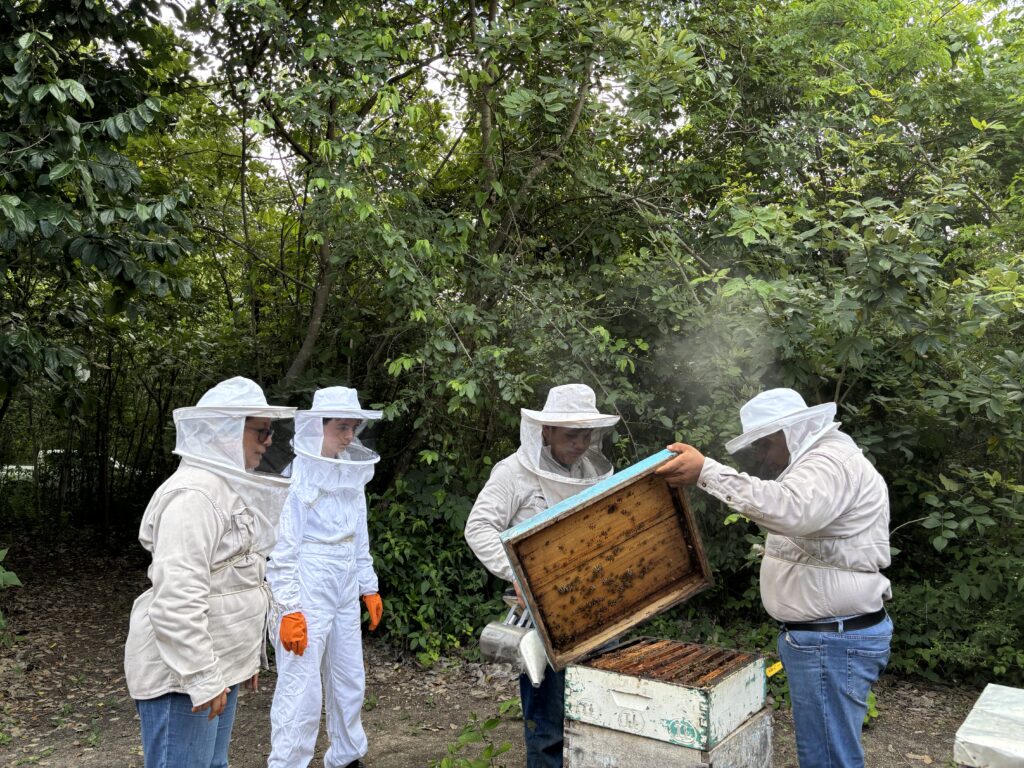
The beekeepers began collaborating with Plant-for-the-Planet around seven years ago, when reforestation in Constitución was still young. They saw the landscape shift, tree by tree, and the bees responded quickly.
“You plant and the bees help,” they said. “And when the bees help, the land recovers faster.”
This partnership shows the intersectionality of forest restoration. Part of our work in Constitución is ensuring that the forest and the local community grow together. Restoring forests at scale is not possible without strong, long-term economic relationships with the people who live around them. Beekeeping is one of the clearest examples of this alignment:
- the community gains a stable income source,
- the forest gains active pollinators,
- the restoration site gains resilience,
- and everyone benefits from healthier land.
Forest restoration creates systems where people and ecosystems can rely on each other again. And here in Campeche, two beekeepers and thousands of bees have become an essential part of that system: carrying pollen, suppressing invasive grasses, and giving young forests the support they need to survive the dry seasons and the years ahead.
Sometimes the smallest partners make the biggest difference.


